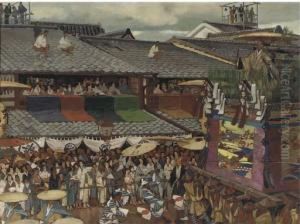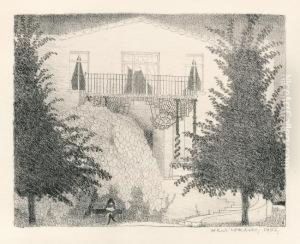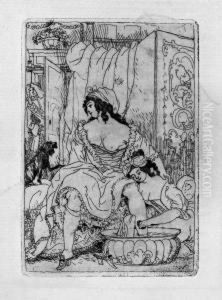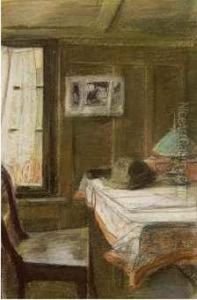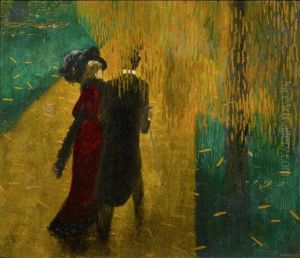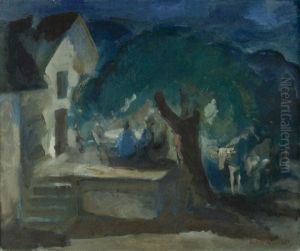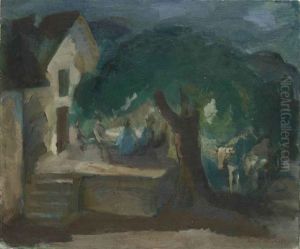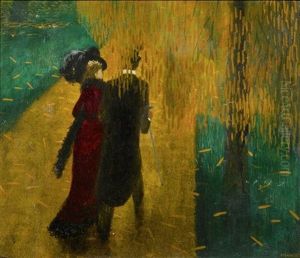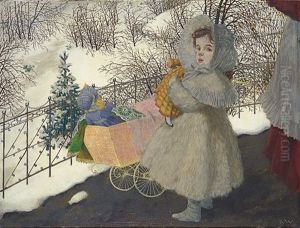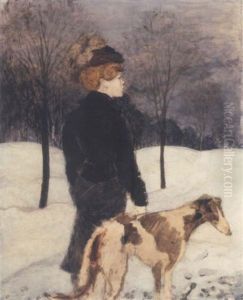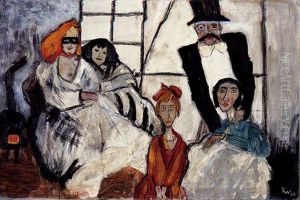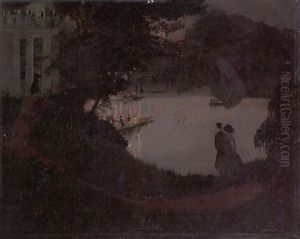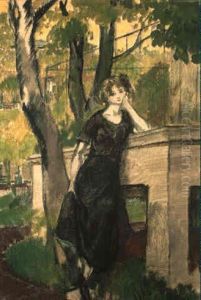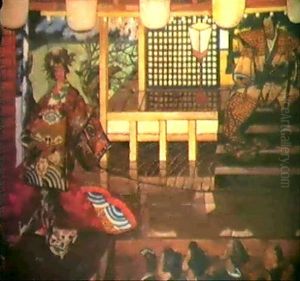Karl Walser Paintings
Karl Walser was a Swiss painter, stage designer, and illustrator, born on May 10, 1877, in Biel, Switzerland. He was notably the older brother of the renowned Swiss writer Robert Walser, with whom he maintained a close and influential relationship. Karl's artistic talents emerged early in his life, and he pursued his passion for art through formal education.
After initial studies in Switzerland, Walser moved to Munich, Germany, which was a hub for artists and intellectuals at the turn of the century. There, he became part of a vibrant artistic community and honed his skills as a painter. Munich at the time was a breeding ground for new artistic ideas, and Walser embraced the various movements that were emerging, including Art Nouveau and Symbolism. His style, however, remained distinctive and personal, characterized by a use of vivid color and often incorporating elements of the Swiss landscape.
In addition to painting, Walser was a prolific stage designer and illustrator. He designed sets for numerous theater productions and illustrated several books, including some written by his brother Robert. Karl's illustrations were well received and complemented the poetic and whimsical nature of Robert's prose. The collaboration between the Walser brothers was mutually inspiring, with Karl's visual art contributing to the atmosphere and imagery found in Robert's writing.
Despite his talent and the initial promise of his career, Karl Walser did not achieve enduring fame. His life was overshadowed by mental health issues, and in the 1920s, he was hospitalized for psychiatric care. This led to a decline in his artistic output, and he spent the latter part of his life in relative obscurity. Karl Walser passed away on March 15, 1943, in Herisau, Switzerland.
Although Karl Walser may not be as widely known as other artists of his time, his work provides a unique window into the cultural and artistic milieu of early 20th-century Europe. His legacy is closely tied to that of his brother, and his contributions to stage design and illustration continue to be recognized by scholars and enthusiasts of Swiss art history.
